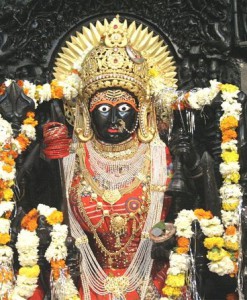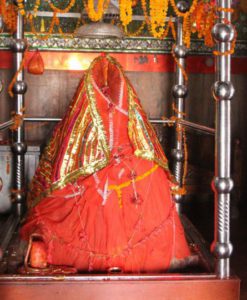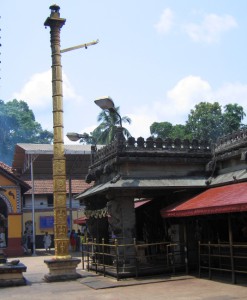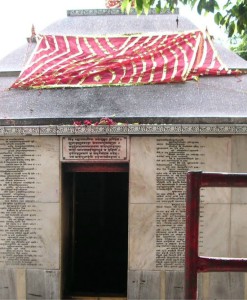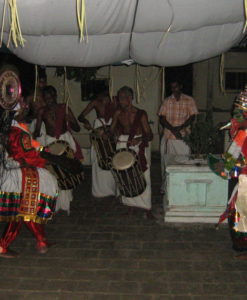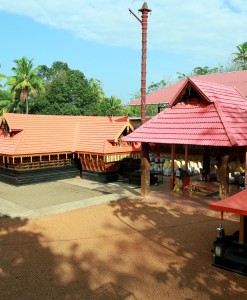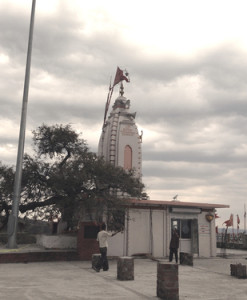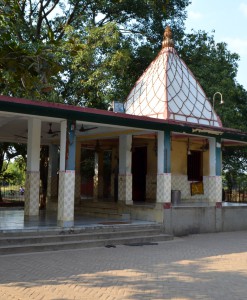No products in the cart.
Julfa Mata Temple is situated in a small town of Nangal, in the district of Rupnagar, in the state of Punjab, in Northwest India. It is one of the fifty one Shako Peethas. According to the local legends and religious scholars, it is strongly believed that the hair of the deity fell at this particular spot It is an ancient Hindu temple that has a lot of religious significance related to North India. This shrine is located atop the hill range of Nangal — Hambewal road in the Shivalik hills. It is just five kilometers away from Nangal Township. This temple is well-connected with road facilities so large number of adherent devotees and tourists visit daily for the deity’s blessings for their better personal and professional life.
Julfa Mata Temple, Nangal;
According to the story, there were demons who were harassing gods over the Himalayan Mountains. Gods decided to destroy them. Lord Vishnu was leading them. The Gods focused their strengths in a huge flame which rose from the earth. Out of the fire a young girl took birth and regarded as Adishakti (means first shakti). She grew up in the house of Prajapati Daksha. She was called as Parvati or Sati. Later she became wife of Lord Shiva.
Once, Prajapati Daksha insulted Lord Shiva. Parvati was unable to accept this and she killed herself. When Lord Shiva came to know about her wife’s death, there were no boundaries of his extreme anger. He began stalking the three worlds while holding Sati’s body. The other Gods approached Lord Vishnu for help as they were afraid of Lord Shiva’s rage. Lord Vishnu fired arrows which served Sati’s body into fifty one pieces. Where ever the pieces fell, the fifty one sacred Shaktipeeths came into existence. It is believed that at Julfa Mata temple, Sati’s hair fell. The word ‘julfa’ means hair.
The word “Julfa” means hair, it is strongly belived that Goddess Sati’s hair fell at the spot where the shrine is located now. It is one of the Shakti Peethas that has much religious significance among the Hindus. At this shrine, most of the pujas, yagnas, homams and other religious activities and functions are performed as per the ancient Hindu rules and regulations. This temple attracts a large number of devotees from the nook and corner of the world and within the nation because of its religious importance during the auspicious days and festive days.
The priests follow the Vedic rules and regulations in a very strict manner in their religious activities and functions with a lot of perfection. The temple’s priests are appointed by the shrine’s authorities regularly takes care of the shrine and offer worship to the deity. Most of the Devotees offer sweets such as laddu, Suji halwa, kheer, barfi plus flowers and coconut to the goddess. There is a Lord Shiva temple on the right side of this shrine. In the temple complex, there is a Pipal tree that is largely worshipped by the adherent devotees. They tie sacred thread that is called as moll.
Julfa Mata temple largely reflects the architectural style and pattern of a rich manner. It also reflects the skills and talents of the artisans of the golden period of primeval era. The shrine enshrines the primary idol of Devi in the main temple within the temple complex. The steps that lead to this temple are beautifully carved in an attractive manner in those days. The prayer halls of this temple have many pillars with ancient Hindu Gods and Goddess images that reflect certain mythological stories. The foundation of the temple is very strong with large rock structures that withstand the mountainous geographical disturbances. The look of the shrine is really resembles ancient Hindu temples of North India.
By Road: The Temple has a strong network of private and public sector bus services. Hence it can very conveniently be reached from important cities like Punjab, Himachal Pradesh, Delhi, Haryana, Jammu and Kashmir.
By Rail: The nearest railway station is Nangal Dam.
By Air: Nearest Airport is Ludhiana Airport.
Julfa Mata temple is strongly believed that the deity wholeheartedly fulfils the different types of wishes of the adherent devotees if worshipped with dedication and commitment. During the Saawan months and Navaratri festival, the shrine is elegantly decorated with flowers and lights arrangements. Most of the religious pilgrims and devotees from far off places within the state and nation throng the shrine premises to largely offer worship to the deity plus receive her immediate blessings. Most of the major and minor festivals are grandly celebrated in a religious manner. On Hindu auspicious days, the temple is marked with special poojas, yagnas and homams as per Vedic methods. A large number of local devotees throng this temple daily with prayers on their lips. There are certain devotees who come on foot to this temple from their home along with their family members, relatives and friends.



